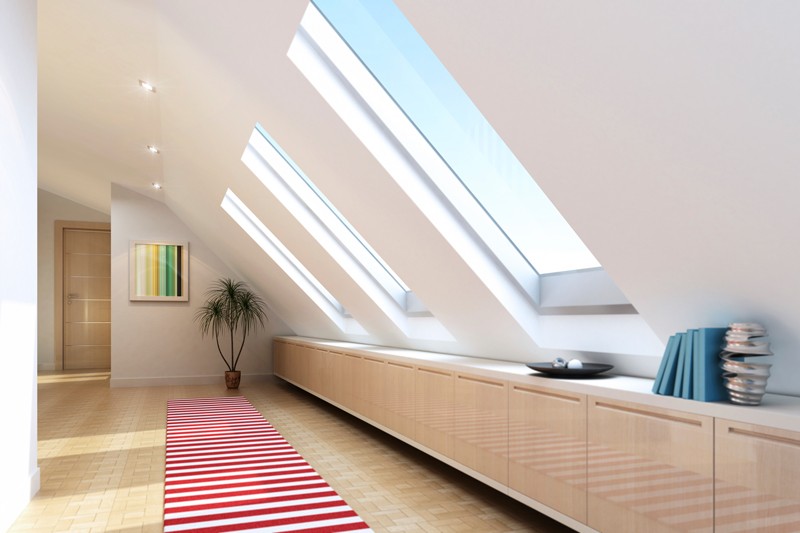Roof spaces in central London sell for about 50% of the value of the finished flat – which means that leaseholders or potential purchasers of a top flat in London should beware:
There is almost certainly a property developer who has their eyes on the air above your head.
It is one of the reasons for wanting to buy the freehold of an apartment building. However, the law is not always clear as to who owns the air above a building. In some cases, it is the owner of the top-floor flat who has the right to develop the roof space, so if you live in or own a top-floor flat it is worth checking the terms of your lease in case there is a large windfall a few feet above your head. Read the lease carefully because, even if you do own the right to build on the roof, you may be unable to do so without the permission of the freeholder, who will almost certainly demand a cut. And in London’s property market, where no space is too small or awkward for development, it is probably worth finding out if you can get permission to create a basement, too.
In the competitive and ever-evolving real estate market of central London, property owners are constantly seeking ways to maximize the value of their assets. One intriguing avenue gaining traction is the sale of roof spaces, which can fetch prices up to 50% of the value of a finished flat. These underutilized areas are becoming highly sought after due to their potential for development and the scarcity of available land in prime locations.
Central London is renowned for its soaring property prices, making it one of the most expensive real estate markets globally. With limited space for new construction, developers and property owners are turning their attention skyward to unlock hidden value in the form of roof spaces. These spaces, often overlooked and unused, present a unique opportunity to expand living or commercial areas without the need for extensive new builds.
The demand for roof spaces stems from the desire for additional living or working spaces in the heart of the city. Buyers and investors are attracted to the idea of transforming these underutilized areas into luxurious penthouses, spacious apartments, or trendy office spaces. The allure lies not only in the added square footage but also in the exclusivity and breathtaking views that rooftop properties can offer.
The value of roof spaces in central London is influenced by various factors, including location, size, and planning permissions. Prices can range anywhere from 30% to 50% of the value of a finished flat in the same area. While this may seem like a significant investment, it presents an opportunity for property owners to capitalize on their assets and generate substantial returns.
The process of selling a roof space involves careful consideration and planning. Property owners must navigate through planning permissions, building regulations, and any restrictions imposed by local authorities. Engaging the services of experienced architects, surveyors, and legal professionals can help streamline the process and ensure compliance with all necessary regulations.
Investors looking to purchase roof spaces in central London should conduct thorough due diligence. It is essential to assess the feasibility of the project, evaluate potential returns on investment, and consider any future market trends that may impact the property’s value. Working with reputable developers and professionals who have a track record in rooftop conversions can provide valuable guidance and expertise.
While the sale of roof spaces can be a lucrative venture, it is important to note that it may not be suitable for all property owners. Factors such as the structural integrity of the building, the cost of conversion, and the impact on existing tenants or residents must be carefully evaluated before proceeding.
Roof spaces in central London hold immense potential for unlocking hidden value in a highly competitive real estate market. Property owners who have underutilized rooftop areas have the opportunity to capitalize on the strong demand for additional living or commercial spaces. Likewise, investors can explore the possibilities of acquiring and developing these unique properties. With careful planning, expert guidance, and a thorough understanding of the market, roof spaces can prove to be a valuable asset in central London’s property landscape.
If you really want to create value in your property, enlarging it is one of the best ways to do so, but roofs and basements aren’t the only options. To assess your property’s extension possibilities, look at it from the garden or road behind. Have other properties on the same street been extended or altered at all? If so, it may have created a precedent for planning permission. Each opportunity needs to be assessed on its own merits, but the ‘big four ’ extension possibilities are side returns, conservatories, lofts and basements.
So, if you’re in the market for buying apartments, it would be wise to buy a top-floor one-bed flat, where it’s possible to extend into the roof space for a second bedroom. Make sure there’s enough head height (the floor will need strengthening, so you’ll lose a good six inches) and get your solicitor to verify ownership of the loft space and guarantee that consent from the freeholder is available. To maximise resale value, any additions should be properly incorporated into the main body of the property, and remember that purchasers like good light levels and well-proportioned rooms: don’t sacrifice a good space to create two boxy rooms.
Planning and using your common sense are vital. Establish the ceiling price for similar local properties and budget accordingly. There is no point spending £60,000 on an extension and bumping up your asking price by £100,000 if people with that sort of budget simply won’t want to live in your street. Similarly, you will put off prospective buyers by adding a cheap-looking extension to a smart property.

